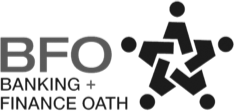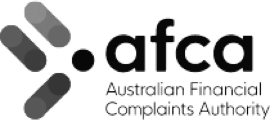There is a new breed of successful businesses that all share one common characteristic. They are customer-first, not product-first. This shift in focus becomes difficult in more well established organisations who have built processes and infrastructure to deliver products they feel comfortable with rather than creating positive experiences for their customers. However, in the modern business world, it is the customers’ desires (and not the business’) that need to come first and inspire innovation and growth.
This is where the product-first model falls short. Instead of dictating to customers, businesses need to listen – and listen well – to what their customer base has to say. In this article, we’ll be looking at this in more detail and understanding how small businesses and lenders alike can adopt this new focus.

Best practices for becoming a customer-obsessed company
- Putting the customer first in everything
‘The customer comes first’ – this will certainly not be news to Australian business owners. This is something of a retail and service industry ‘101’ lesson – a fundamental tenet of what it means to succeed in the market.
But how many of us really live and die by this motto? Organisations need to not merely adopt this approach. They need to become passionate evangelists for the concept and truly believe in what it means. Without the customer, success is impossible, so marketers must work to understand customer motivation, capture customer insights, and share this across the whole organisation. - Focusing on real wants and needs
Once these motivations and these key desires are defined, they must become the focus of the organisation. All products and services must be geared towards fulfilling these needs as a primary aim. In short, the customer wants and needs become the be-all and end-all of product and service development. - Build relationships to maximise customer experience
Having the right products and services in place – products and services that are built around customer needs and desires – is critical, but a truly customer-focused organisation goes beyond this. Such organisations take steps to build effective and long-lasting relationships with customer experience at the heart it all.
This means ongoing support and assistance throughout the customer lifecycle. It also means constantly refining products and services to enhance UX at every turn. And, it means using the right data to appraise and analyse the relationships you are building. - Analysis, planning, and implementation of customer strategies
A customer-first approach does not happen by accident, nor does it come about via unfocused action or non-integrated strategies. Instead, strategies must be unified and harmonious. They must work together to achieve long-term aims and they need to be appraised regularly to ensure they remain fit for purpose.
How do you measure being customer-first?
Data really is everything in modern business. This is not simply because it is helpful for seeing evidence of the results, but rather, it’s because business owners need this evidence and this understanding if they are to bring about meaningful changes in their operating procedures.
So, how do business owners measure customer-centricity and how do they receive proof that their efforts are working effectively?
A recent article published by McKinsey & Company identifies three core elements to successful measuring and analysis of customer-focus in business. These are:
- Customer journey
This means expanding the focus of analysis to cover the totality of the customer experience. Rather than solely focusing on a transactional touch point, businesses must gather data from the entire customer lifecycle in order to properly understand how the customer is interacting with the organisation.
- Technological implementation
The second element requires the deployment of the necessary technology at every stage; technology which makes it possible to gather this valuable data. This includes technology to capture direct, qualitative data from customers, as well as tech which integrates survey results, social data, and other sources on a usable platform.
- Feedback Loop
The feedback loop concerns your customer-facing staff in particular. Your staff need to be able to capture the data provided to them by customers regarding their experience, and then wield this data as they aim to enhance this experience in the long term. This means developing the end product so it is more in line with what the customer needs, as well as applying the same approach to customer service.
And how about the metrics? What should business owners be measuring to ensure that they are adopting a customer-first approach?
There are two key aspects here:
- Customer satisfaction – By conducting regular customer surveys or analysing net promoter scores, businesses can get a firm grasp of the customer experience.
- Customer retention and churn – Along with the more qualitative data received from surveys, businesses can analyse customer retention levels to achieve quantitative numbers which back up customer experience findings.
How business lending in Australia is becoming customer-focused – and how this is helping small businesses to grow
Now that high levels of customer focus have become so vital to modern businesses, it is no surprise that small business lenders are adopting a similar approach. The recent Royal Commission report by Commissioner Haynes pushed lenders to be more customer-focused, directing institutions to act fairly, legally, and with their customers’ best interest at heart.
This is a far cry from the traditionally product-first landscape of business lending, in which little attention was paid to relationship building and offerings were often unfit for purpose with regard to small and medium-sized businesses.
The new breed of alternative lenders have recognised this and are already ahead of ‘the big banks’ when it comes to a profoundly customer-oriented focus. Lenders such as Banjo Loans have the doctrine of being customer-first written into their very DNA, and are characterised by a distinct focus on responsible lending. We can see this in the impact of the lending strategies on the customer themselves – with a customer-first approach, the entire customer experience is supported at each turn, eliminating things like financial stress which can also affect personal lives.
This pleasing shift in focus is evident in other areas too. Accountancy services are becoming increasingly geared towards the customer, and are incorporating improved advisory, auditing, and taxation capabilities, which are more in line with what the client actually needs as opposed to what the accountant wants the client to need. Alignment of need and product, or need and service, is leading to a far brighter future for businesses and is supporting their ongoing growth.
Uber, Amazon, Netflix – chances are you’ve heard of these organisations. It’s no coincidence that all three are obsessed with their customers. The emphasis on customer-focus is not always easy to achieve but it must be the goal of all businesses if they are to grow. There is no way to side-step this challenge – the customer must come first, every time.


